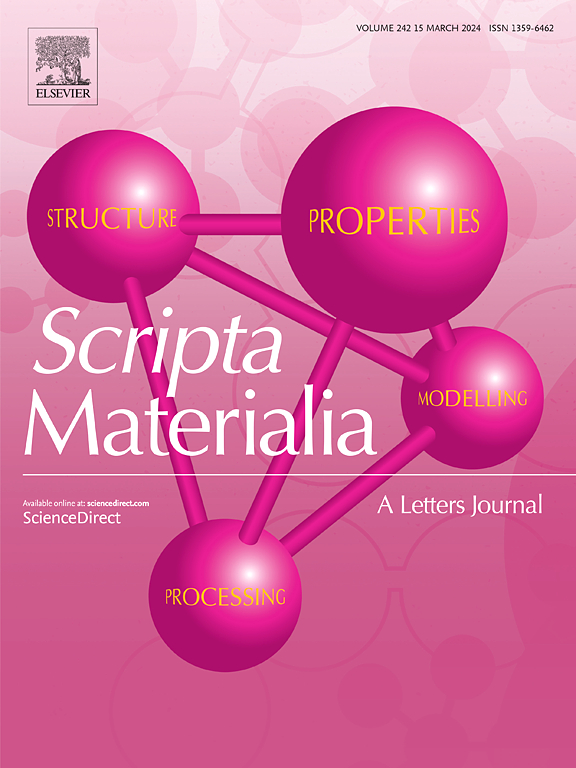激光粉末床熔化中基于重熔的微结构工程:316L 不锈钢案例研究
IF 5.3
2区 材料科学
Q2 MATERIALS SCIENCE, MULTIDISCIPLINARY
引用次数: 0
摘要
在激光粉末床熔融(LPBF)中,大体积柱状晶粒的形成往往会导致不理想的机械各向异性。在此,我们展示了一种新策略,在不改变能量密度和扫描模式的情况下,通过调整熔池重叠来控制 LPBF 的微观结构。以 316L 不锈钢为例,我们生成了多种晶粒尺寸和形态。其基本机制与后续熔池形成过程中熔池中新成核晶粒的保留或消除有关。保留或消除晶粒的倾向在很大程度上取决于熔池重叠的程度,因为晶粒容易在熔池边界的自由表面成核。这种简便的策略可适用于多种金属合金,为增材制造中的微结构工程铺平了新的道路。本文章由计算机程序翻译,如有差异,请以英文原文为准。
Remelting-based microstructure engineering in laser powder bed fusion: A case study in 316L stainless steel
In laser powder bed fusion (LPBF), the formation of bulky columnar grains often results in undesirable mechanical anisotropy. Here, we demonstrate a new strategy to control the microstructure in LPBF through tuning melt pool overlaps without changing energy densities and scan patterns. Using 316L stainless steel as an example, we generate a wide range of grain sizes and morphologies. The underlying mechanism is associated with the retainment or elimination of newly nucleated grains at a melt pool during the formation of subsequent melt pools. The propensity of retainment or elimination of grains is largely dependent on the extent of melt pool overlaps because the grains are prone to nucleate at the free-surfaces of melt pool boundaries. This facile strategy could be applicable to a wide range of metallic alloys, paving a new way for microstructure engineering in additive manufacturing.
求助全文
通过发布文献求助,成功后即可免费获取论文全文。
去求助
来源期刊

Scripta Materialia
工程技术-材料科学:综合
CiteScore
11.40
自引率
5.00%
发文量
581
审稿时长
34 days
期刊介绍:
Scripta Materialia is a LETTERS journal of Acta Materialia, providing a forum for the rapid publication of short communications on the relationship between the structure and the properties of inorganic materials. The emphasis is on originality rather than incremental research. Short reports on the development of materials with novel or substantially improved properties are also welcomed. Emphasis is on either the functional or mechanical behavior of metals, ceramics and semiconductors at all length scales.
 求助内容:
求助内容: 应助结果提醒方式:
应助结果提醒方式:


